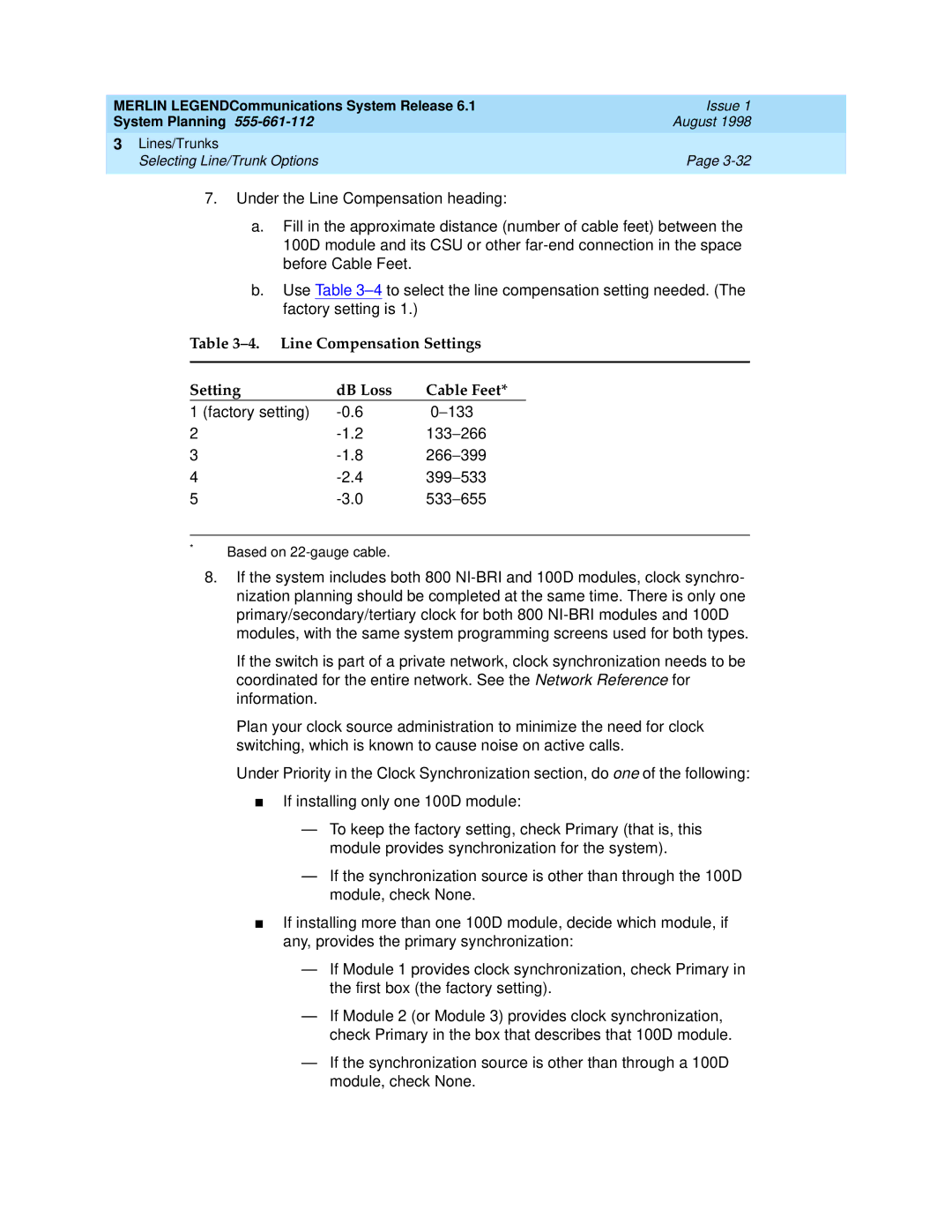
MERLIN LEGENDCommunications System Release 6.1 | Issue 1 |
System Planning | August 1998 |
3 Lines/Trunks |
|
Selecting Line/Trunk Options | Page |
|
|
7.Under the Line Compensation heading:
a.Fill in the approximate distance (number of cable feet) between the 100D module and its CSU or other
b.Use Table
Table 3–4. Line Compensation Settings
Setting | dB Loss | Cable Feet* |
1 (factory setting) | 0−133 | |
2 | 133−266 | |
3 | 266−399 | |
4 | 399−533 | |
5 | 533−655 |
*Based on
8.If the system includes both 800
If the switch is part of a private network, clock synchronization needs to be coordinated for the entire network. See the Network Reference for information.
Plan your clock source administration to minimize the need for clock switching, which is known to cause noise on active calls.
Under Priority in the Clock Synchronization section, do one of the following:
■If installing only one 100D module:
—To keep the factory setting, check Primary (that is, this module provides synchronization for the system).
—If the synchronization source is other than through the 100D module, check None.
■If installing more than one 100D module, decide which module, if any, provides the primary synchronization:
—If Module 1 provides clock synchronization, check Primary in the first box (the factory setting).
—If Module 2 (or Module 3) provides clock synchronization, check Primary in the box that describes that 100D module.
—If the synchronization source is other than through a 100D module, check None.
